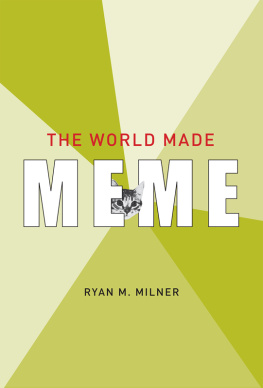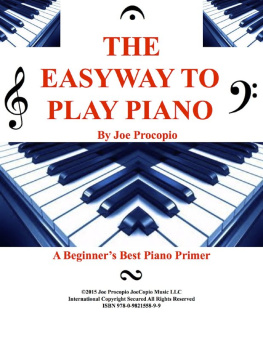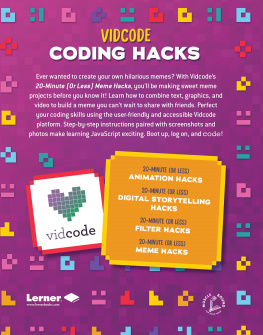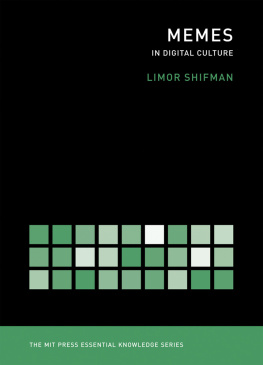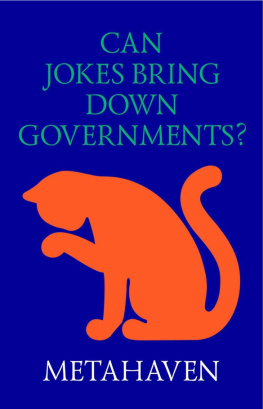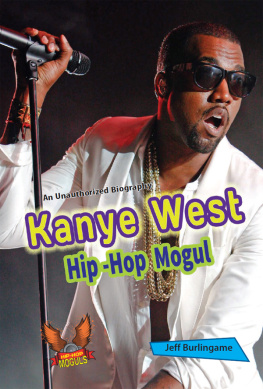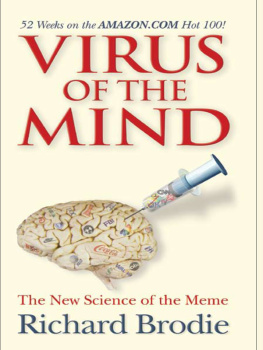The Information Society Series
Laura DeNardis and Michael Zimmer, Series Editors
Interfaces on Trial 2.0, Jonathan Band and Masanobu Katoh
Opening Standards: The Global Politics of Interoperability, Laura DeNardis, editor
The Reputation Society: How Online Opinions Are Reshaping the Offline World, Hassan Masum and Mark Tovey, editors
The Digital Rights Movement: The Role of Technology in Subverting Digital Copyright, Hector Postigo
Technologies of Choice? ICTs, Development, and the Capabilities Approach, Dorothea Kleine
Pirate Politics: The New Information Policy Contests, Patrick Burkart
After Access: The Mobile Internet and Inclusion in the Developing World, Jonathan Donner
The World Made Meme: Public Conversations and Participatory Media, Ryan M. Milner
The World Made Meme
Public Conversations and Participatory Media
Ryan M. Milner
The MIT Press
Cambridge, Massachusetts
London, England
2016 Massachusetts Institute of Technology
All rights reserved. No part of this book may be reproduced in any form by any electronic or mechanical means (including photocopying, recording, or information storage and retrieval) without permission in writing from the publisher.
This book was set in Stone Sans and Stone Serif by Toppan Best-set Premedia Limited. Printed and bound in the United States of America.
Library of Congress Cataloging-in-Publication Data
Names: Milner, Ryan M., author.
Title: The world made meme : public conversations and participatory media / Ryan M. Milner.
Description: Cambridge, Massachusetts : The MIT Press, [2016] | Series: The information society series | Includes bibliographical references and index.
Identifiers: LCCN 2016010239 | ISBN 9780262034999 (hardcover : alk. paper)
eISBN 9780262335904
Subjects: LCSH: Memes. | Memetics. | Culture diffusion. | Mass media.
Classification: LCC HM626 .M553 2016 | DDC 302dc23 LC record available at https://lccn.loc.gov/2016010239
ePub Version 1.0
Acknowledgments
This book, like the texts at its heart, is a collective endeavor. It wouldnt exist without years of help and support from the people closest to me. From the earliest iterations of this research, the insight and sacrifice of my mentors and friends have proven invaluable. In many ways, this book began when I first wandered into Nancy Bayms graduate seminar on digital media at the University of Kansas a decade ago. I was a dazed M.A. student who wasnt quite sure why he was there, but Nancys years of guidance shaped me into the scholar I am today, and I can only hope this work honors that profound influence.
The same could be said for the professors who guided parts of this project at the University of Kansas. I spent my graduate education crowding the offices and struggling through the seminars of Jay Childers, Dave Tell, Yan Bing Zhang, Ben Chappell, and many others, grappling with half-formed ideas along the way. They helped walk those ideas closer to fruition. My time in Lawrence, Kansas, was also defined by some of the finest friends I could hope for. My fellow graduate students Mike Anderson, Evan Center, Chelsea Graham, Vince Meserko, John Vilanova, and Clare Echterling spent years generously lending me their eyes and earsand on a few nights, their couches. As this project comes to a close, I have not forgotten them.
As I left the University of Kansas, the help and support did not wane. Mentors like Jean Burgess and Limor Shifman, as well as colleagues like Kate Miltner, have provided substantial insight. Whether sitting right next to me at a conference panel or trading ideas with me from halfway across the world, these mentors and colleagues have been instrumental. In particular, Whitney Phillips has been astounding in her support, camaraderie, and kindness. This book is the better for her feedback and friendship, and Im a better scholar for both. As I have struggled to refine the perspectives that became this book, I am grateful I have not had to do it alone.
I have many people to thank from my time at the College of Charleston as well. Leigh Moscowitz, David Moscowitz, April Bisner, Paul Anderson, Max Kovalov, Carl Wise, Kaitlin Reiss, Bea Maldonado-Bird, and Abby Steere-Williams have all opened their homes, offered their insight, andmost importantlyprovided their friendship, shaping this project along the way. Among my friends at the College of Charleston, David Parisi and Jacob Steere-Williams have proven ever more invaluable with every article shared, every class co-taught, and every happy hour toasted. Without the community of friends and scholars around me, this book would still be a half-hoped dream.
At home, Sarah, Sophia, Gabriel, and Pearl have endured more than their fair share of long workdays and forcibly quiet rooms. And theyve responded with nothing but love, esteem, and giant hugs every time I walk through the door. Back in Kansas City, mom and Eric have kept close even as their son and brother moved across the country. My family has stayed right here with me, celebrating my every success and commiserating my every worry through every step of this project. I wouldnt be me without them, so this book wouldnt exist without them.
From its earliest conception to its final days with the stellar team at the MIT Press, the collective that wrote this book is too vast to list. I am grateful for every reviewer, editor, panel chairevery student, mentor, and friendwho has shaped the pages to follow. I am also grateful for the innumerable constellations of participants creating, circulating, and transforming memetic media. Every hashtag, every mashup, every Photoshop; this book wouldnt be anything without any of them. So thank you.
Introduction: The Rise of Memetic Media
The Memetic Tapestry
This book is about emerging patterns in public conversations, and about the social participation essential to those conversations. It focuses on internet memesthe linguistic, image, audio, and video texts created, circulated, and transformed by countless cultural participants across vast networks and collectives. Internet memes take the form of pictures captioned on Reddit, puns hashtagged on Twitter, and videos mashed up on YouTube. They can be widely shared catchphrases, Auto-Tuned songs, manipulated stock photos, or recordings of physical performances. Theyre used to make jokes, argue points, and connect friends. The concept has risen in prominence over the last twenty years, emerging from the esoteric forums and message boards where participants first linked Richard Dawkinss (1976, 1982) theories of cultural replication to shared in-jokes, catchphrases, and signature texts.
As the years have worn on, the scope and reach of this connection has widened. In the past half-decade, memes such as Binders Full of Women, The Harlem Shake, Pepper Spray Cop, We are the 99 Percent, Double Rainbow Guy, Grumpy Cat, Ridiculously Photogenic Guy, Planking, Kanye Interrupts, Rickrolling, Slenderman, Hands Up, Dont Shoot, Black Lives Matter, Yes All Women, and The Ice Bucket Challenge have become cultural touchstones. The sites where memetic media are often sharedTwitter, YouTube, and Reddit, among many othershave also grown in public interest and significance. In 2015the year this manuscript was writtenits hard to imagine a major pop cultural or political moment that doesnt inspire its own constellation of mediated remix, play, and commentary.
In this environment, mediated expression and debate consistently occur through and around an ever-growing collection of populist memetic texts. Memetic media are premised on participation by reappropriation, on balancing the familiar and the foreign as new iterations intertwine with established ideas. In this way, small strands weave together big conversations that are increasingly prominent, vibrant, and instantaneous. This book is about those small strands and the big conversations they inspire, asmoment after moment, representation after representation, dialogue after dialoguepublic participants memetically make their world.
Next page
